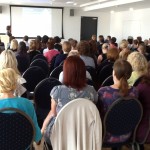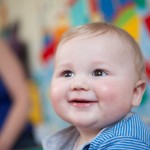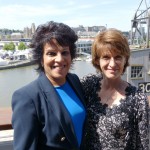 On Friday just gone I attended one of the most interesting, thought provoking and ultimately exciting conference days it has ever been my pleasure to be at. The goals and aspirations of all involved are inspiring and bold. If, or rather, when these goals are achieved it really will put a UK based network in the forefront of global children’s burns research and internationally will have positive ramifications for any child unfortunate enough to be burnt.
On Friday just gone I attended one of the most interesting, thought provoking and ultimately exciting conference days it has ever been my pleasure to be at. The goals and aspirations of all involved are inspiring and bold. If, or rather, when these goals are achieved it really will put a UK based network in the forefront of global children’s burns research and internationally will have positive ramifications for any child unfortunate enough to be burnt.
I am not just talking about burns caused by fire. Children suffer burns from the simplest of things such as scalding from a hot cup of tea, being put in a bath where the water is a little too hot, hot irons being toppled from boards and even (as an Australian delegate showed) receiving burn stings from a box jelly fish. Simple things….devastating consequences.
As those of you who read my blog may know I was assigned to the Childrens Burns Research Centre (CBRC) last year in my role as ambassador for The Healing Foundation (THF). The Healing Foundation is a charity that funds all sorts of medical research seats and projects in universities around the UK and the CBRC was one of those in 2013. Well, I say I was assigned to CBRC but really I chose them from the projects that Brendan, the chief executive of THF, ran past me. My interests tend to lie in anything to do with burns or the psychological impact of any disfigurement, both issues, for obvious reasons, fascinate me.
When I met the team in 2013 I was completely out of my depth. I am not an academic nor a health professional and though they kindly and patiently explained the different facets of what they were trying to achieve my head spun. As each one in turn got up to explain their particular specialism I would nod my head vigorously, understanding what they were saying for a nano second and completely forgetting by the time the next person spoke. I just could not get my head around the ‘bigger picture’ which I knew was going to be vital if I had any chance of being a help to them.
Then they invited me to their first event, the conference in Bristol on 6th June 2014. They sent me an agenda of all the guest speakers in advance of the day and what their topics were…… I went into that mild, flappy panic we all experience from time to time. “Oh no”, I thought “I am never going to understand any of this” I inwardly groaned however, an ambassador for THF has to do what they have committed to do, so along the M4 I dutifully pootled.

“You’ll never keep to time” I teased lead Professor Alan Emond, “You’ve got 15 speakers, a workshop session, coffee breaks and lunch to squeeze in seven and a half hours – it’s not going to work” I continued. Alan smiled cheerfully but his eyes were steely in their determination, “Oh yes we will” he said.
And so they began. Because each speaker was so restrained as to the time they had the information they imparted was succinct, to the point and clear on what made their particular field unique. The only slight niggle was that after the umpteenth power point presentation I did feel a little over-dosed on slides but I suppose there isn’t a better way to show what they mean currently. We heard from not just British scientists and practitioners but also from colleagues from Australia and Switzerland. The topics were varied and myriad ranging from research questions, funding plans, international co-operation and collaboration to practical implementation. Some ideas even sounded like something out of science-fiction (Gene Roddenberry would be proud). From my point of view it was perfect as I at last began to understand the huge complexity of what was being proposed and the potential benefits that could flow from it. I saw the ‘Bigger Picture’ and it looks absolutely wonderful.
By the time the day finished I was enthused and excited and am so glad that CBRC agreed I could be involved in their evolution. I now feel that I might be able to help them in their quest and look forward to working with the team in the years to come. Oh, and yes, they finished right on the dot of 4.30pm – pretty impressive.

To find out more have a look at CBRC’s website: http://www.bristol.ac.uk/social-community-medicine/childrens-burns/about/

